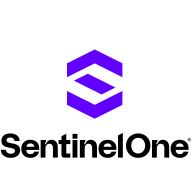


Trend Vision One Cloud Security and Microsoft Defender for Cloud compete in the cloud security market. Trend Vision One may hold an advantage in multi-cloud environments due to its robust security features and ease of use, while Microsoft Defender stands out for its integrations and comprehensive threat detection across Azure, AWS, and GCP.
Features: Trend Vision One Cloud Security delivers strong security analysis, remote access and driver security, and a highly-regarded dashboard providing real-time alerts. Its ease of setup, intrusion prevention, and vulnerability protection are particularly beneficial for multi-cloud and hybrid environments. Microsoft Defender for Cloud offers comprehensive threat detection across Azure, AWS, and GCP environments. It is well-integrated with Microsoft tools, enhancing threat intelligence and regulatory compliance. Advanced threat intelligence is a key Microsoft Defender benefit.
Room for Improvement: Trend Vision One Cloud Security could improve its Azure support, automation, and documentation. There are also calls for enhanced integration with third-party tools and better dashboard intuitiveness. Microsoft Defender for Cloud might improve the user interface consistency and provide more intuitive threat prioritization. Users request better pricing transparency and stronger third-party integration. Both could utilize AI for automated threat resolution.
Ease of Deployment and Customer Service: Trend Vision One Cloud Security supports public, private, hybrid, and on-premise deployments, and receives praise for its technical support and customer service, with some communication and onboarding concerns. Microsoft Defender for Cloud is favored for ease of integration with Azure services and community support, yet has potential complexities in multi-platform environments.
Pricing and ROI: Trend Vision One Cloud Security offers mid-range pricing with scalable cost options based on infrastructure usage, noted as cost-effective and ROI positive. Microsoft Defender for Cloud's pricing is competitive within the Microsoft ecosystem, with straightforward licensing but costly advanced features. Integration with existing Microsoft licenses enhances value, although early cost assessments can be complex, both solutions boasting positive ROI with emphasis on cost management benefits.
The detailed information PingSafe gives about how to fix vulnerabilities reduces the time spent on remediation by about 70 to 80 percent.
After implementing SentinelOne, it takes about five to seven minutes.
Cloud Native Security does offer ROI.
Defender proactively indexes and analyzes documents, identifying potential threats even when inactive, enhancing preventative security.
Identifying potential vulnerabilities has helped us avoid costly data losses.
The biggest return on investment is the rapid improvement of security posture.
The product has proven to be reliable and compatible with our network infrastructure.
When we send an email, they respond quickly and proactively provide solutions.
They took direct responsibility for the system and could solve queries quickly.
Having a reliable team ready and willing to assist with any issues is essential.
Since security is critical, we prefer a quicker response time.
The support team was very responsive to queries.
They understand their product, but much like us, they struggle with the finer details, especially with new features.
The technical support is good.
I would rate it a 10 out of 10 for scalability.
Scalability is no longer a concern because Cloud Native Security is a fully cloud-based resource.
I would rate the scalability of PingSafe 10 out of 10.
We are using infrastructure as a code, so we do not have any scalability issues with Microsoft Defender for Cloud implementation because our cloud automatically does it.
It has multiple licenses and features, covering infrastructures from a hundred to five hundred virtual machines, without any issues.
Defender won't replace our endpoint XDR, but it will likely adapt and support any growth in the Microsoft Cloud space.
It's a reliable solution that the organization is increasingly adopting for its robust features and security.
We contacted Cloud Native Security, and they addressed it in a day.
The only downtime we had was when switching from V1 to V2 but it was smooth.
Defender's stability has been flawless for us.
Microsoft Defender for Cloud is very stable.
Microsoft sometimes changes settings or configurations without transparency.
If they can merge Kubernetes Security with other modules related to Kubernetes, that would help us to get more modules in the current subscription.
As organizations move to the cloud, a cloud posture management tool that offers complete cloud visibility becomes crucial for maintaining compliance.
I would also like to see Cloud Native Security offer APIs that allow us to directly build dashboards within the platform.
Microsoft, in general, could significantly improve its communication and support.
It would be beneficial to streamline recommendations to avoid unnecessary alerts and to refine the severity of alerts based on specific environments or environmental attributes.
The artificial intelligence features could be expanded to allow the system to autonomously manage security issues without needing intervention from admins.
An integrated appliance from Trend Micro would streamline the process, providing customers with a pre-configured solution and removing dependencies on external hardware.
I believe the enterprise version costs around $55 per user per year.
There are some tools that are double the cost of Cloud Native Security.
I recall Cloud Native Security charging a slightly higher premium previously.
Every time we consider expanding usage, we carefully evaluate the necessity due to cost concerns.
We appreciate the licensing approach based on employee count rather than a big enterprise license.
Microsoft Defender for Cloud is pricey, especially for Kubernetes clusters.
The Trend Vision One pricing is reasonable.
This helps visualize potential attack paths and even suggests attack paths a malicious actor might take.
The infrastructure-as-code feature is helpful for discovering open ports in some of the modules.
This tool has been helpful for us. It allows us to search for vulnerabilities and provides evidence directly on the screen.
The most valuable feature for me is the variety of APIs available.
This feature significantly aids in threat detection and enhances the user experience by streamlining security management.
The most valuable feature is the recommendations provided on how to improve security.



| Company Size | Count |
|---|---|
| Small Business | 46 |
| Midsize Enterprise | 20 |
| Large Enterprise | 53 |
| Company Size | Count |
|---|---|
| Small Business | 26 |
| Midsize Enterprise | 7 |
| Large Enterprise | 45 |
| Company Size | Count |
|---|---|
| Small Business | 11 |
| Midsize Enterprise | 6 |
| Large Enterprise | 7 |
SentinelOne Singularity Cloud Security offers a streamlined approach to cloud security with intuitive operation and strong integration capabilities for heightened threat detection and remediation efficiency.
Singularity Cloud Security stands out for its real-time detection and response, effectively minimizing detection and remediation timelines. Its automated remediation integrates smoothly with third-party tools enhancing operational efficiency. The comprehensive console ensures visibility and support for forensic investigations. Seamless platform integration and robust support for innovation are notable advantages. Areas for development include improved search functionality, affordability, better firewall capabilities for remote users, stable agents, comprehensive reporting, and efficient third-party integrations. Clarity in the interface, responsive support, and real-time alerting need enhancement, with a call for more automation and customization. Better scalability and cost-effective integration without compromising capabilities are desired.
What are SentinelOne Singularity Cloud Security's standout features?SentinelOne Singularity Cloud Security is deployed in industries needing robust cloud security posture management, endpoint protection, and threat hunting. Utilized frequently across AWS and Azure, it assists in monitoring, threat detection, and maintaining compliance in diverse environments while providing real-time alerts and recommendations for proactive threat management.
Microsoft Defender for Cloud is a comprehensive security solution that provides advanced threat protection for cloud workloads. It offers real-time visibility into the security posture of cloud environments, enabling organizations to quickly identify and respond to potential threats. With its advanced machine learning capabilities, Microsoft Defender for Cloud can detect and block sophisticated attacks, including zero-day exploits and fileless malware.
The solution also provides automated remediation capabilities, allowing security teams to quickly and easily respond to security incidents. With Microsoft Defender for Cloud, organizations can ensure the security and compliance of their cloud workloads, while reducing the burden on their security teams.
Trend Vision One- Cloud Security Security provides comprehensive cloud security, threat protection, and compliance monitoring. Users commend its advanced features, ease of use, and strong performance in keeping digital assets safe. The platform improves efficiency and productivity for organizations while offering excellent customer support.
We monitor all Cloud Detection and Response (CDR) reviews to prevent fraudulent reviews and keep review quality high. We do not post reviews by company employees or direct competitors. We validate each review for authenticity via cross-reference with LinkedIn, and personal follow-up with the reviewer when necessary.